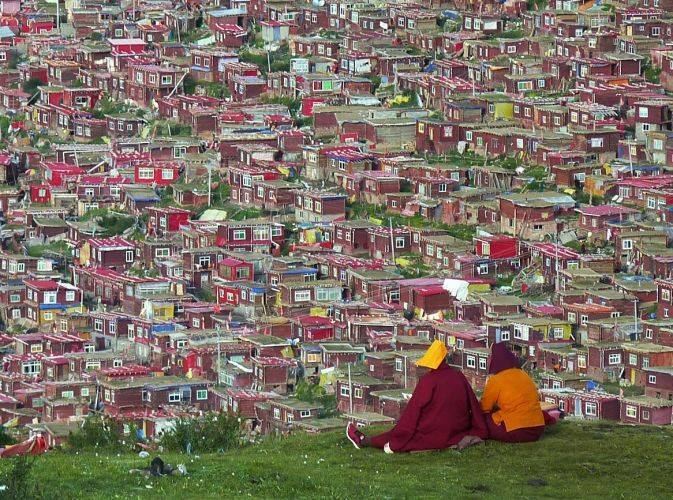Website gzz.gov.cn Local time Saturday 6:13 AM | Area 151,078 km² | |
 | ||
Weather -1°C, Wind S at 6 km/h, 81% Humidity Points of interest Mount Gongga, Tagong, Luding Bridge, Battle of Luding Bridge, Changqingchun Ke'ersi | ||
Garzê Tibetan Autonomous Prefecture (Tibetan: དཀར་མཛེས་བོད་རིགས་རང་སྐྱོང་ཁུལ་, THL Kardzé Börik Rangkyongkhül; Chinese: 甘孜藏族自治州) — is an autonomous prefecture of China occupying the western arm of Sichuan. It is sometimes spelled "Kardzé" and "Garzin" by non-government sources.
Contents
Map of Garze, Sichuan, China
The prefecture's area is 151,078 square kilometres (58,332 sq mi). The population is approximately 880,000, with Tibetans accounting for 77.8% of the total population. The capital city of Garzê is Kangding (Dardo).
History
Garzê was traditionally part of the historical region of Kham.
During the period of rule by the Republic of China (1912–49), Garzê became nominally part of the province of Xikang, which included parts of former Kham.
In 1930, the Tibetan army invaded Garzê, capturing it without much resistance. However, in 1932, the Tibetan army withdrew after suffering defeats elsewhere at the hands of the warlord of Qinghai, Ma Bufang. Chinese warlord Liu Wenhui reoccupied Garzê, and signed an agreement with the Tibetans formalizing his control of the area east of the upper Yangtze, which corresponds roughly with eastern Kham.
In 1950, following the defeat of the Kuomintang forces by the People's Liberation Army, the area fell within the control of the People's Republic of China. Eastern Xikang was merged with Sichuan in 1955, where Garzê became an autonomous prefecture.
Population
According to the census of 2000, Garzê had a population of 897,239 (population density: 5.94 people/km²).
Languages
Garzê is highly linguistically diverse, and has many Qiangic languages.
Religion
Tibetan Buddhism is historically the predominant religion practiced in Garzê. Protests by monks supporting the autonomy of Tibet and Tibetan human rights have been increasingly occurring at temples and monasteries in Garzê. Gompas here include:
Subdivisions
Garzê comprises 1 county-level city and 17 counties:
